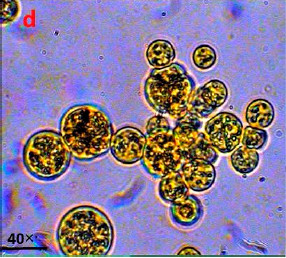Article: Carrizo et al. Spatial distributions of DDTs in the Water Masses of the Arctic Ocean. Environ. Sci. Technol., Just Accepted Manuscript. DOI: 10.1021/acs.est.7b01369
Smart and stupid at the same time?
Humans seem to be capable of extraordinary genius, along with profound stupidity; weirdly enough, as I write this I’m thinking of apps like Tinder or Pokemon Go. Both apps required serious computer science genius to create, yet somehow app users get themselves into ridiculously silly/stupid situations, i.e. these people or these guys. On a more serious note, this same concept applies to human chemical production. It’s taken decades of research to identify and synthesize specific structures that appear in consumer products all around us. Yet, some of these extraordinary chemical creations were created with acute short-sightedness; some are extremely persistent or toxic, and we have ended up creating chemicals that are harmful to ourselves and other creatures.
One such traitorous chemical is DDT; this compound was created for use as an insecticide.

However, DDT has been found to be a carcinogen, and is highly toxic to a range of aquatic animals and birds. DDT was banned during the 70’s and 80s around the globe as a result. However, DDT and its breakdown products still persist globally, even after decades of bans and restricted use. Dr. Daniel Carrizo from Stockhom University and fellow researchers recently highlighted just how persistent DDT is by identifying the compound at great depths in the Arctic Ocean.
The research

Carrizo and his crew used water samples taken from across the Arctic basin at various depths. The use of water samples for this analysis was a welcome choice, as most of the studies looking at DDT in the Arctic have relied on air samples from the region rather than water. The samples were analyzed for DDT and 5 of its breakdown products using gas chromatography/mass spectrometry.
This analysis provided the researchers with concentrations of DDT and its breakdown products associated with different depths, locations, and water masses. The researchers used the derived concentrations to create estimates of the mass of DDT in each water mass as well as an estimate for the mass of DDT in water and sediment across the whole Arctic region.
The results
The researchers found DDT and its breakdown products across all water masses and at all depths; DDT and/or its associated breakdown products were appreciable at depths up to 2500 m. They also found that concentrations of a DDT breakdown product, DDE, increased with depth.

The researchers also noted a spatial trend, suggesting that regions closer to Europe and in the Atlantic region of the Arctic had elevated concentrations of sum DDT. Based on their observed DDT water concentrations, they estimated that the Arctic Ocean contains about 53,000 kg of sum DDT (sum DDT = DDT + 5 breakdown products) in water and sediment reservoirs.
The relevance
Though few people actually live in the Arctic, the appreciable concentrations of DDT found in this water from across the region are still noteworthy. First of all, the finding of DDT at depth reinforces how persistent this compound is. It takes decades for material to travel to great depths, so its presence at depths up to 2500 meters suggests this chemical can persist for years in the ocean and continue to act in the environment during that time. The increased concentrations of DDE at depth also suggest that DDT is being broken down and transformed as the molecules age and are transported to depth. This transformation process is important, since understanding how DDT is degraded in the environment,may enable creation of better mitigation strategies to facilitate its breakdown, or creation of chemicals that are more readily broken down in the environment. Moreover, the prominence of DDT in the Atlantic sector of the Arctic suggests that northward flowing Atlantic currents like the Gulf Stream act as significant transporters of DDT. This highlights the interconnectivity of pollutant control; DDT put into the environment at low latitudes in the Atlantic basin could ostensibly be transported to the Arctic, meaning to reduce concentrations of DDT or other pollutants in the Arctic, global control of use is required.
Overall, the research significantly adds to our understanding of the distribution of DDT in the Arctic, and highlights that continued research is required to explore the concentrations of persistent chemicals at depths and in remote locations.
I am a third year PhD student at the University of Rhode Island Graduate School of Oceanography in the Lohmann Lab. My current research interests include environmental chemistry, water quality, as well as coastal and seabird ecology. When not in the lab, I enjoy diving, surfing, and hanging out with my dog Gypsy.

